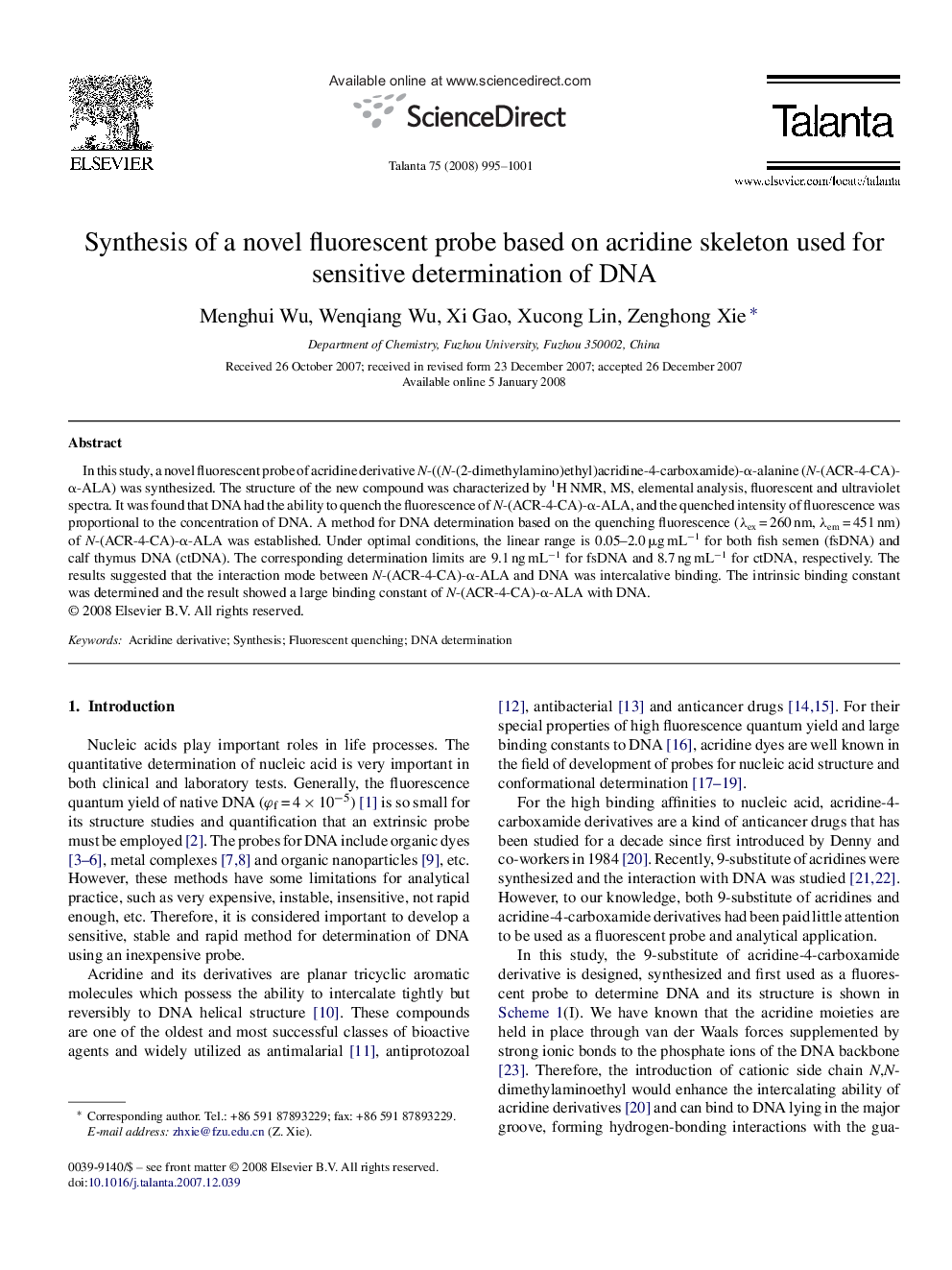| Article ID | Journal | Published Year | Pages | File Type |
|---|---|---|---|---|
| 1243719 | Talanta | 2008 | 7 Pages |
In this study, a novel fluorescent probe of acridine derivative N-((N-(2-dimethylamino)ethyl)acridine-4-carboxamide)-α-alanine (N-(ACR-4-CA)-α-ALA) was synthesized. The structure of the new compound was characterized by 1H NMR, MS, elemental analysis, fluorescent and ultraviolet spectra. It was found that DNA had the ability to quench the fluorescence of N-(ACR-4-CA)-α-ALA, and the quenched intensity of fluorescence was proportional to the concentration of DNA. A method for DNA determination based on the quenching fluorescence (λex = 260 nm, λem = 451 nm) of N-(ACR-4-CA)-α-ALA was established. Under optimal conditions, the linear range is 0.05–2.0 μg mL−1 for both fish semen (fsDNA) and calf thymus DNA (ctDNA). The corresponding determination limits are 9.1 ng mL−1 for fsDNA and 8.7 ng mL−1 for ctDNA, respectively. The results suggested that the interaction mode between N-(ACR-4-CA)-α-ALA and DNA was intercalative binding. The intrinsic binding constant was determined and the result showed a large binding constant of N-(ACR-4-CA)-α-ALA with DNA.
